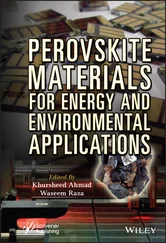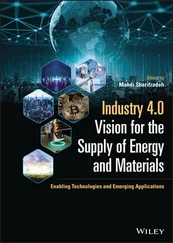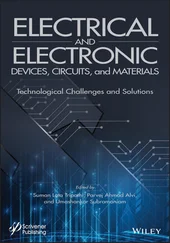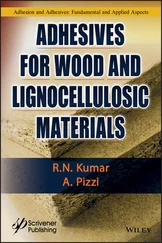1 Cover
2 Title Page Industrial Carbon and Graphite Materials Raw Materials, Production and Applications Edited by Hubert Jäger and Wilhelm Frohs Volume 1
3 Copyright Editors Prof. Dr. Hubert Jäger Technical University Dresden Institute of Lightweight Engineering and Polymer Technology Holbeinstr. 3 01307 Dresden Germany Dr. Wilhelm Frohs SGL Carbon GmbH Werner‐von‐Siemens‐Str. 18 86405 Meitingen Germany Cover credits Cover pictures kindly provided by SGL CARBON GmbH, Meitingen Germany All books published by Wiley‐VCH are carefully produced. Nevertheless, authors, editors, and publisher do not warrant the information contained in these books, including this book, to be free of errors. Readers are advised to keep in mind that statements, data, illustrations, procedural details or other items may inadvertently be inaccurate. Library of Congress Card No.: applied for British Library Cataloguing‐in‐Publication Data A catalogue record for this book is available from the British Library. Bibliographic information published by the Deutsche Nationalbibliothek The Deutsche Nationalbibliothek lists this publication in the Deutsche Nationalbibliografie; detailed bibliographic data are available on the Internet at < http://dnb.d-nb.de >. © 2021 WILEY‐VCH GmbH, Boschstr . 12, 69469 Weinheim, Germany All rights reserved (including those of translation into other languages). No part of this book may be reproduced in any form – by photoprinting, microfilm, or any other means – nor transmitted or translated into a machine language without written permission from the publishers. Registered names, trademarks, etc. used in this book, even when not specifically marked as such, are not to be considered unprotected by law. Print ISBN: 978‐3‐527‐33603‐6 ePDF ISBN: 978‐3‐527‐67403‐9 ePub ISBN: 978‐3‐527‐67405‐3 oBook ISBN: 978‐3‐527‐67404‐6 Cover Design Formgeber, Mannheim, Germany Typesetting SPi Global, Chennai, India Printed on acid‐free paper 10 9 8 7 6 5 4 3 2 1
4 Preface Preface Carbon materials have a long history in human societies. The history reaches from a dye pigment for cave painting to electrical and thermal conductors in big‐scale industrial processes. The modern production of iron, steel, and aluminum would not be possible without industrial carbon materials like graphite electrodes, carbon anodes, and refractory materials. Further, modern electronics would not exist without the help of graphite materials during their production. Finally, stiff and lightweight structures can be obtained with carbon fiber reinforced composites. Bulk materials like carbon blacks are essential for automotive tires and for paints and in the rubber industry. Activated carbon materials help keep our environment clean. Mentioning all the other plentiful applications would go beyond the scope. With nanoscaled allotropes, the element carbon is just recently reinventing itself. Two Nobel Prizes were granted for fullerenes and graphenes. Prominent industrial applications are expected to follow. However, in general the knowledge about industrial carbon and graphite materials is restricted to a small community of experts. In fact, information about their raw materials, production, and applications are not easily available in one comprehensive compendium. Information has to be gathered from various sources. For many decades, the Ullmann’s Encyclopedia of Technical Chemistry has been one of these sources. Thus, the editors combined updated single existing chapters of the Ullmann’s Encyclopedia of Technical Chemistry to the backbone of one comprehensive book about technical carbon and graphite materials. New chapters have been added to complete the overview. The content of the book is completed by the IUPAC nomenclature on carbon as a solid. This book is addressed to a widened circle of interested people from academia, students, and commercial and technical employees in various industries. The editors thank all authors for their support and the publisher for his uncomplaining cooperation. The Editors, June 2018 Hubert Jäger Wilhelm Frohs
5 Volume 1 1 Introduction: The Future of Carbon Materials – The Industrial Perspective Hubert Jäger1, Wilhelm Frohs2, and Tilo Hauke2 1 Technische Universität Dresden, Institute of Lightweigth Engineering and Polymer Technology (ILK), Hohlbein Street 3, Dresden, 01307, Germany 2 SGL Carbon GmbH, Werner‐von‐Siemens‐Street 18, 86405 Meitingen, Germany
1 Introduction: The Future of Carbon Materials – The Industrial Perspective 1 Introduction: The Future of Carbon Materials – The Industrial Perspective Hubert Jäger1, Wilhelm Frohs2, and Tilo Hauke2 1 Technische Universität Dresden, Institute of Lightweigth Engineering and Polymer Technology (ILK), Hohlbein Street 3, Dresden, 01307, Germany 2 SGL Carbon GmbH, Werner‐von‐Siemens‐Street 18, 86405 Meitingen, Germany
1.1 Overview 1.1 Overview This chapter provides information about the industrial importance of various carbon and graphite materials. Carbon and graphite materials are mostly unknown to the public. They are obvious in few consumer products only, such as lead pencils, or in sporting goods as carbon fibers, for example. In contrast, the importance of carbon materials for the production of iron, steel, and aluminum is not common knowledge. The iron, steel, and aluminum industry created in 2011 a global market value of around 1100 billion €. This is equivalent to around 50% of the value of the global annual crude oil production. Although we will not consider metallurgical coke in this chapter, the market value should be mentioned; it is around 155 billion €. Also not considered here are carbon black (11 billion €) and activated carbon (1.8 billion €). The market value of carbon materials in total (without metallurgical coke) is at around 42 billion € ( Figure 1.1 ). The biggest contributor with a market value of 18 billion € is carbon anodes for aluminum electrolysis. Within the group of polygranular carbon materials, the anodes are followed by graphite electrodes for the production of electric arc furnace (EAF) steel with a market value of six billion €. Smaller markets are cathodes for the production of aluminum (1.4 billion €), fine‐grained graphite for multifold applications (0.7 billion €), furnace linings for blast furnace steel production (0.3 billion €), and carbon electrodes for the production of silicon (0.2 billion €). Other carbon materials like natural graphite, carbon fibers, and graphite for Li‐ion batteries play a minor role versus the conventional carbon products yet. Changes may happen in the near future driven by the need for the efficient storage and use of energy. The market for conventional carbon materials will continue to grow driven by the demand coming from the BRIC countries (Brazil, Russia, India, and China). New forms of carbon, the carbon nanomaterials, created huge expectations but are currently not produced in an industrial scale with the exception of multiwall carbon nanotubes (MWCNTs). With the recent demonstration of the potential of graphene, a single graphite layer, in microelectronic circuits, we might see the beginning of a new market for carbon materials. Figure 1.1 Carbon materials and their market value.
1.2 Traditional Carbon and Graphite Materials 1.3 Modern Application of Carbon Materials 1.4 Future Application of Carbon Materials 1.5 Conclusion 2 The Element Carbon 2.1 Introduction 2.2 Diamond 2.3 Graphite 2.4 Non‐graphitic Carbon 2.5 Carbyne and Chaoite 2.6 Nanoforms of Carbon References Further Reading 3 History of Carbon Materials 3.1 Origin of Elemental Carbon 3.2 Formation and Economic Development of Natural Diamonds 3.3 Formation and Use of Natural Graphite 3.4 History of Charcoal from Wood and Coke from Coal 3.5 History of Carbon Black 3.6 History of Activated Carbon 3.7 Development of Synthetic Graphite 3.8 Development of Synthetic Diamonds 3.9 Development of Carbon Fibers 3.10 Discovery and Inventions of Nanocarbons: Fullerenes, Nanotubes, and Graphene References 4 Recommended Terminology for the Description of Carbon as a Solid (© 1995 IUPAC) List of Terms Description of the Terms References 5 Graphite 5.1 Graphite Single Crystal 5.2 Natural Graphite 5.3 Synthetic Graphite References Further Reading 6 Industrial Carbons 6.1 Introduction to Polygranular Carbon and Graphite Materials 6.2 Manufacturing 6.3 Environmental, Health and Safety Aspects of the Production of Carbon and Graphite 6.4 Properties of Polygranular Carbon and Graphite Materials 6.5 Applications 7 Carbon and Graphite for Electrochemical Power Sources 7.1 Introduction 7.2 Primary Batteries 7.3 Lead Acid Batteries 7.4 Li‐Ion Batteries 7.5 “Beyond Li‐Ion” Battery Chemistries 7.6 Electrochemical Double‐Layer Capacitors 7.7 Redox Flow Batteries 7.8 Fuel Cells References Further Reading
Читать дальше












